UC Gardening Blogs
Want Another Reason to Practice Social Distancing? Head Lice.
Most people are practicing social distancing due to the current pandemic, so contracting head lice...
Garden Record-Keeping
by Pat Hitchcock The other day somebody complimented me on my “beautiful” gardening...
Pollinia: Like Having Gum on Your Shoes
If you've ever stepped in sticky gum, it's similar to what happens when an insect steps into...
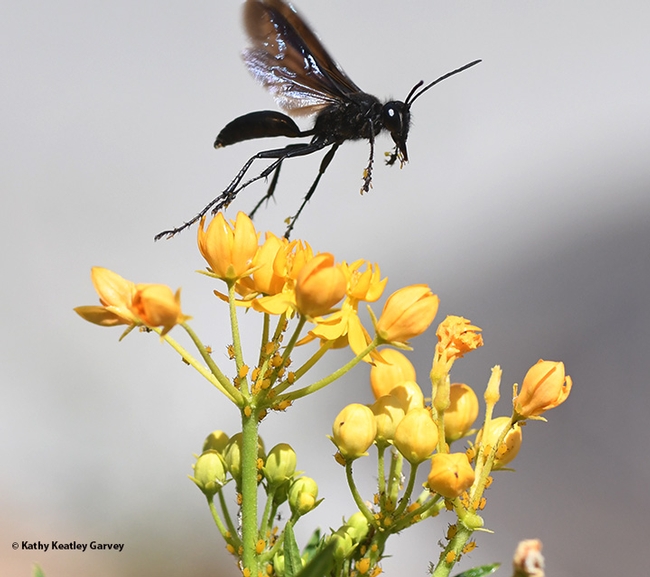
This wasp, a species of Podalonia, flies off a tropical milkweed at the UC Davis Arboretum and Public Garden with a load of pollinia, a packet of sticky golden pollen grains. (Photo by Kathy Keatley Garvey)
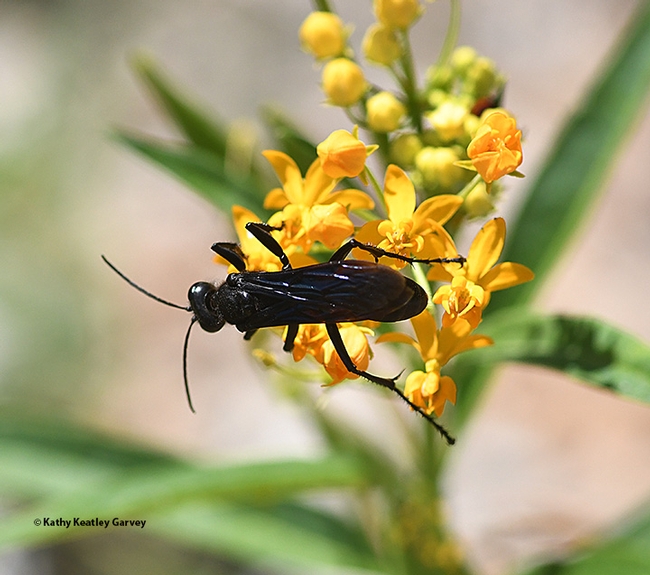
A Podalonia wasp nectars on tropical milkweed at the UC Davis Arboretum and Public Garden. (Photo by Kathy Keatley Garvey)
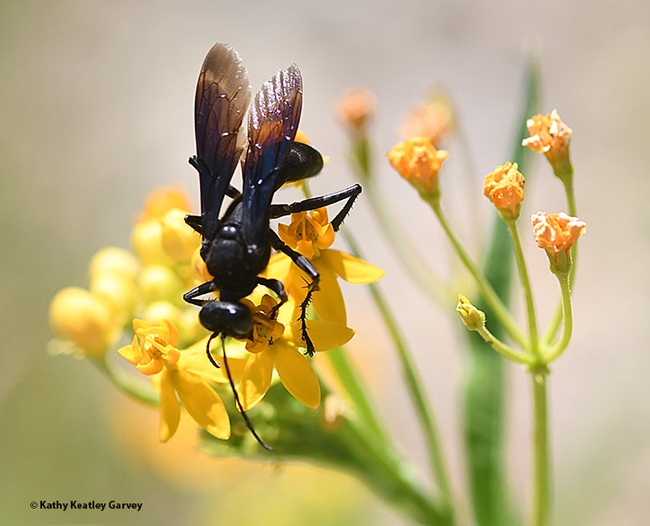
A wasp foraging upside down on tropical milkweed at the UC Davis Arboretum and Public Garden. (Photo by Kathy Keatley Garvey)
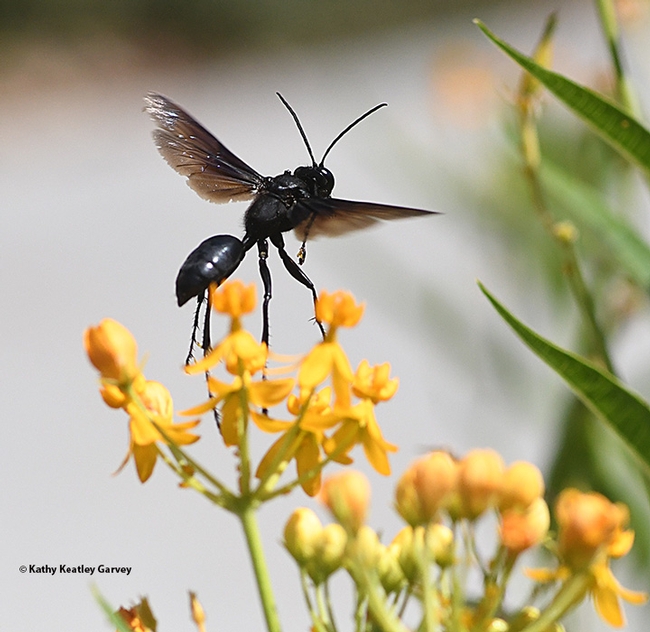
Off to another tropical milkweed--and off packing pollinia. (Photo by Kathy Keatley Garvey)
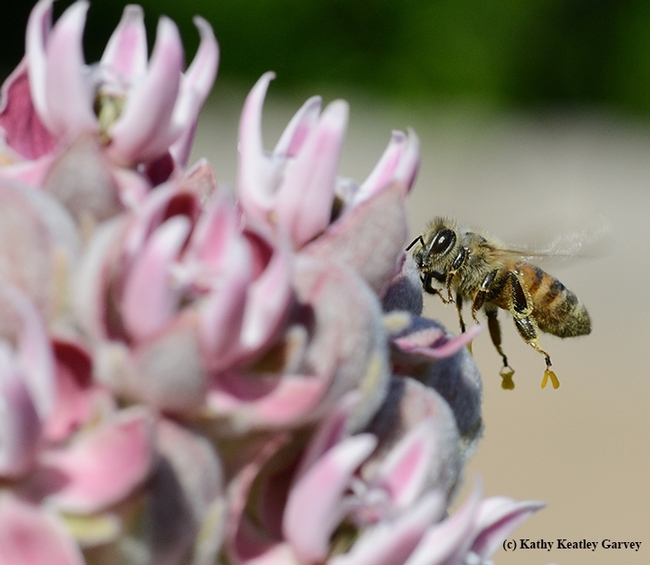
Note the gold, wishboned-shaped pollinia on the honey bee's feet as she heads for more showy milkweed. (Photo by Kathy Keatley Garvey)
A Favorite New Plant and Other News
This year I've found a new favorite plant. Going to the plant sale at the UCDavis arboretum sale last year, I found something called Tweedia (Tweedia caerulea) with bright blue flowers that just shouted out “Pick me” as I was looking around at all the goodies for sale. Tweedia? What? I had to have it!
In gardening books, one can read about the plethora of red-flowered, orange-flowered, white-flowered plants and not to mention yellow flowers, but there are not many blue-flowered ones; oh yes, there's plumbago, delphiniums, hydrangea, not to mention forget-me-nots, but few clear light-blue flowers! So home with me, it went!
Going to my SUNSET book (Sunset Western Garden Book), I was shocked not to find this plant listed! HUH? The “Gardening Bible” didn't list it! Must be an old copy! So I grabbed the latest version and Shock! It wasn't in that copy either! Time to look on-line and there she was -- my baby!
Tweedia caerulea is a member of the milkweed family and like all plants of the milkweed family is toxic to humans and pets when ingested, and when consumed in large quantities can cause cardiac arrest. Generally, gardeners don't have problems with pets eating the plant as it has a strong taste that animals will avoid.
Tweedia is an excellent pollinator plant and pairs nicely with other late-blooming plants such as lavender, sunflowers, black-eyed Susans, and purple coneflowers. Tweedia is called Tweedia, Blue Milk Weed, and Star of Argentine. Dependent on the area grown, it is perennial OR annual. Size is perfect for gardens of all sizes as it matures to 1-3 feet tall and 1 foot wide. It grows best in sun to part sun (it's growing in full sun here in Suisun City) and appreciates well-drained soil. To help it keep its flowers throughout the blooming season, protect the plant from strong winds as delicate blooms can be damaged by both the winds and intense rain. The winds here in Suisun City didn't appear to bother my plant very much but then again, it was in with other plants.
The literature I found described Tweedia as a tropical twining vine (mine doesn't twine) OR subshrub that is native to Brazil and Uruguay and the only milkweed variety with blue flowers. There are also Tweedia caerulea ‘Alba' with white flowers and Tweedia caerulea ‘Rosea' with beautiful pink flowers.
To keep it bushy, pinch the stem tips in the spring to encourage branching in climates where it can be grown throughout the year, regular season-end pruning will help encourage new growth in the spring. Tweedia can be propagated from seed or taking softwood cuttings (4-6 inches) in early to late spring.
I've got seed pods, so I'll keep an eye on them and sow the seeds indoors during the late winter and see what happens!
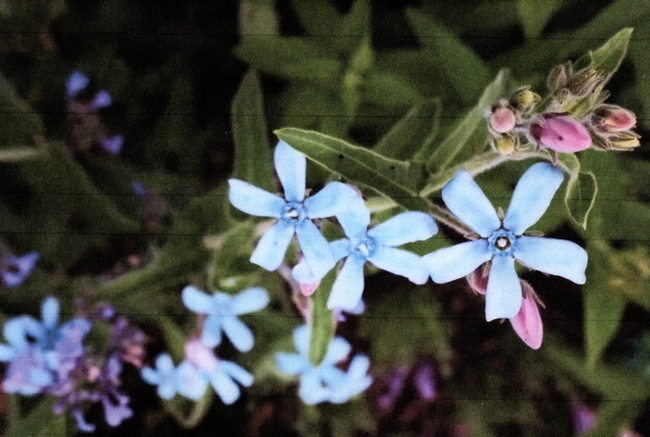
tweedia
More on Our Wild Buckwheats: The California Buckwheat
Continuing our focus on select species of Eriogonum (wild buckwheat), this week's discussion...



